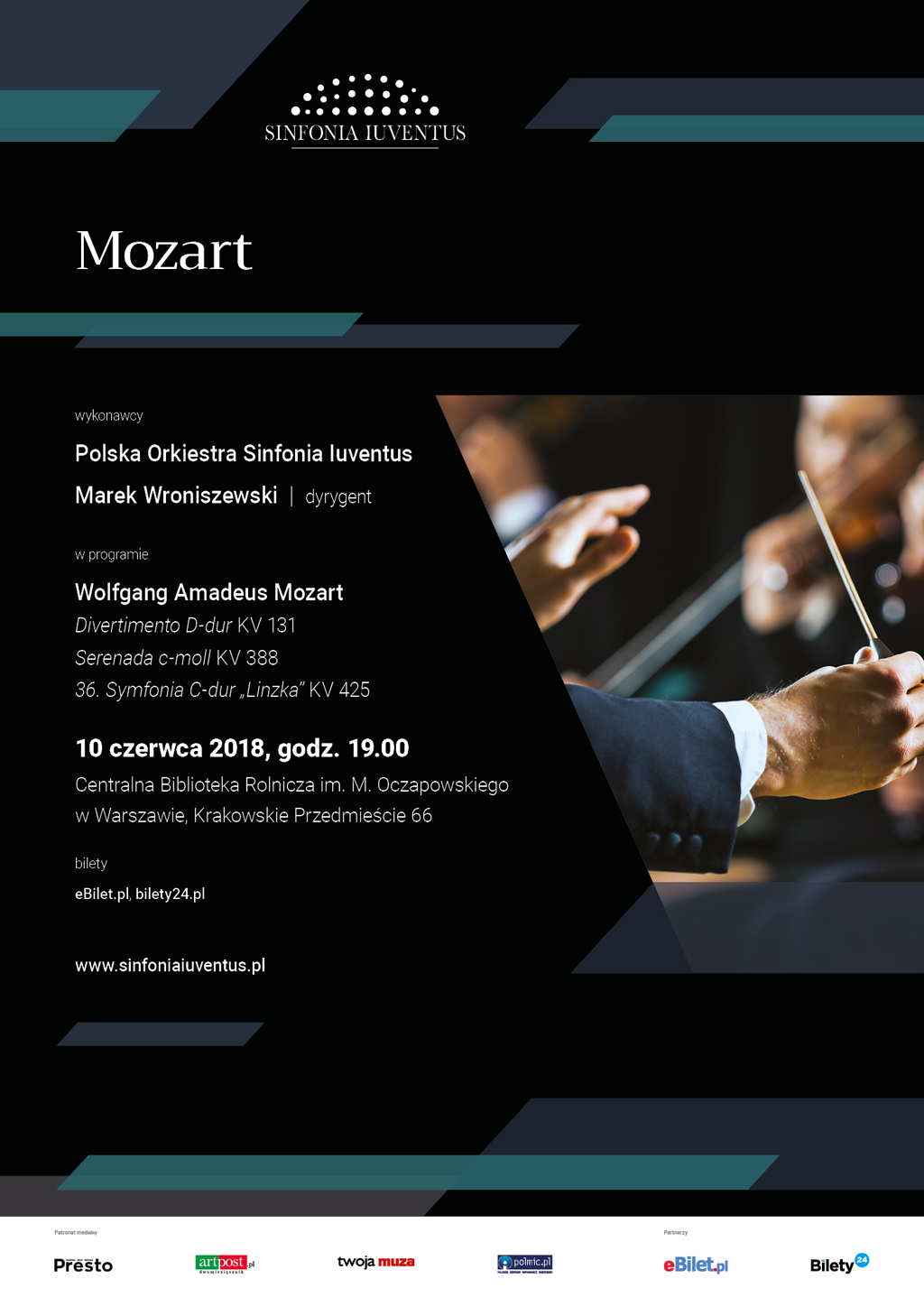Mozart

The serenade, the divertimento and the symphony were three important genres of the 18th century. What were they, how did they differ, what roles did they play? The concert programme will show this on the example of three of Mozart’s masterpieces. Thanks to geniuses such as the great classics Haydn, Mozart and Beethoven, the symphony became one of the most important and most serious forms of compositorial expression, but the road to that status was long. The popularity of the symphonic genre in the 18th century was simply unimaginable – the catalogue publication of American musicologist Jan Larue lists 13,000 unique pieces, in all countries of Europe, as well as beyond it. Today, the majority of them remain forgotten since – like the serenade and the divertimento – at first one of its functions was to “accompany” various court, city or social events (Louis Spohr recalled that a certain Duchess from Brunswich had her musicians perform symphonies as quietly as possible so that they ywould not distract the guests of the court who were playing cards). Rococo gardens and salons constantly resounded with music, and the favourite genres were the serenade and the divertimento, as well as numerous related forms, sometimes difficult to distinguish terminologically, such as nocturnes, partitas, cassations and others. Mozart, in particular, often used these names quite freely, defining them as several of his works with very different casts, including for wind instruments, such as the famous, extremely beautiful Serenade in C minor, K. 388/384a. Some of Mozart’s charming and lightweight works, described as divertimentos, date back to the early years of his youth in Salzburg.
The Symphony in C major, KV 425, is an example of a mature (still strongly influenced by Joseph Haydn, whom he admired) work by 27-year-old Mozart, written in just 4 days during a short visit to Linz, on his way back from Salzburg with his newly-wed wife Constance, following a not very successful visit to the composer’s strict father, Leopold, who did not accept his son’s marriage plans. It was commissioned by the young couple’s host, Count Joseph Anton von Thun and premiered under his auspices. Since then, the symphony been known as the “Linz Symphony”.
Three jewels of Mozart’s music will be performed under the baton of Marek Wroniszewski. The assistant conductor of the Polish Sinfonia Iuventus Orchestra, was awarded the title of the best Polish participant in the 10th Grzegorz Fitelberg International Stefan Competition for Conductors in Katowice. He was also awarded the medal of the Association of Polish Musicians “For Merit to Polish Music”, and the Tisha and Piotr Gajewski Award (one of the members of the Competition jury). He is a graduate of the Instrumental Faculty of the Feliks Nowowiejski Academy of Music in Bydgoszcz and the Karol Szymanowski Academy of Music in Katowice, in the conducting class of Prof. Mirosław Jacek Błaszczyk.
Performers:
Polish Sinfonia Iuventus Orchestra
Marek Wroniszewski | conductor
Programme:
Wolfgang Amadeus Mozart:
Serenade No. 12 for Winds in C minor, K. 388/384a
Divertimento in D major, K.131
Symphony No. 36 in C major, K. 425 The Linz Symphony
We invite you!
Media patronage: Polskie Radio Program 2, Presto, Art Post, Twoja Muza, polmic.pl
Tickets available at bilety24, eBilet..
